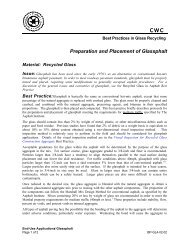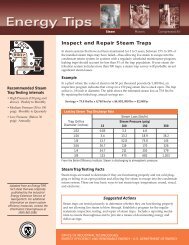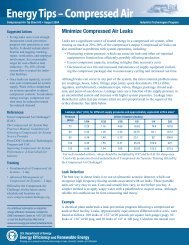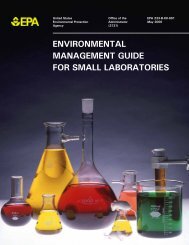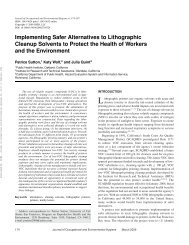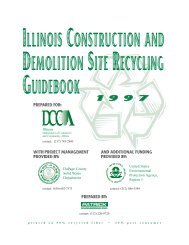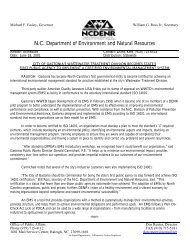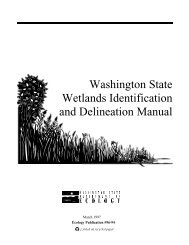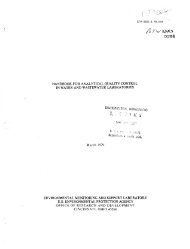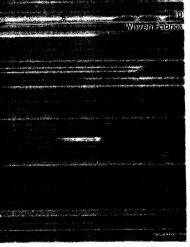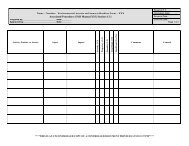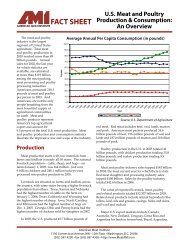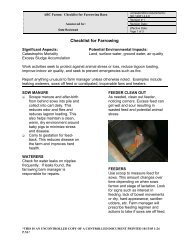A Comprehensive Introduction to Water Footprints
A Comprehensive Introduction to Water Footprints
A Comprehensive Introduction to Water Footprints
You also want an ePaper? Increase the reach of your titles
YUMPU automatically turns print PDFs into web optimized ePapers that Google loves.
Production chaincot<strong>to</strong>nCot<strong>to</strong>n seedHulling/extraction0.160.470.510.33Cot<strong>to</strong>n seed oilCot<strong>to</strong>n seedcake1.071.00Cot<strong>to</strong>n seed oil,refinedCot<strong>to</strong>n plantHarvestingSeed-cot<strong>to</strong>n0.630.18Ginning0.100.20Cot<strong>to</strong>n linters0.350.820.050.10Garnetted s<strong>to</strong>ckCot<strong>to</strong>n lint1.001.00Cot<strong>to</strong>n, notcarded or combedCarding/Spinning0.950.99Cot<strong>to</strong>n, carded orcombed (yarn)0.950.99Knitting/weaving0.050.10Grey fabricYarn wasteWet processingLegend0.350.82Product fractionValue fraction1.001.00FabricFinishing1.001.00Final textileA cot<strong>to</strong>n shirt is made from cot<strong>to</strong>n fabric, which is made from combed or cardedcot<strong>to</strong>n, which is derived from cot<strong>to</strong>n lint, which comes from seed cot<strong>to</strong>n, which isharvested from the cot<strong>to</strong>n field. Indeed, before the final cot<strong>to</strong>n textile reaches <strong>to</strong>the hands of a consumer it passes through a number of intermediate processes andproducts. First the seed cot<strong>to</strong>n is processed in<strong>to</strong> lint (we get only 350 kg of lin<strong>to</strong>ut of 1000 kg of seed cot<strong>to</strong>n), then after carding, spinning and weaving we getgrey fabric (1000 kg of lint produces only 900 kg of grey fabric), then it goes <strong>to</strong>the wet processing (bleaching and dying) and finishes as final printed cot<strong>to</strong>ntextile. It requires about 30 m3 per <strong>to</strong>n for bleaching, 140 m3 per <strong>to</strong>n for dyingand 190 m3 per <strong>to</strong>n for printing. The average water footprint of printed cot<strong>to</strong>n(for example a pair of jeans weighing 1 kilogram) is 11000 litres per kilogram.12



